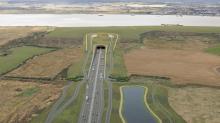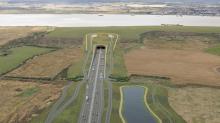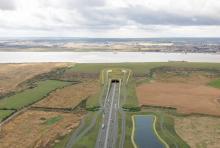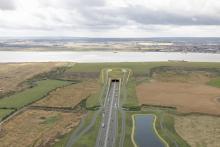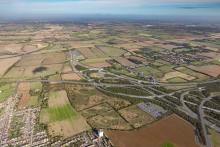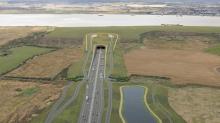The contractor shortlist has been announced for part of the Lower Thames Crossing.
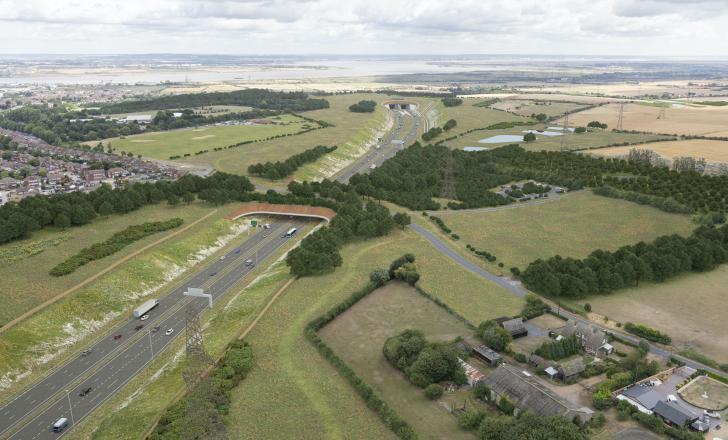
The shortlist for the link road contracts for the Lower Thames Crossing project has been announced
The shortlist of contractors bidding for the link road work on the UK’s Lower Thames Crossing project has been revealed by National Highways. The contracts cover the road links that will connect with either side of the Lower Thames Crossing and are worth a total of £1.9 billion.
Both packages of works cover the design and construction of the respective connecting roads on the north and south sides of the River Thames. There are four bidders competing for the southern Kent Roads package, referred to as Lot 1. Meanwhile, there are two bidders competing for the package of work in Essex north of the Thames, referred to as Lot 2.
The £600 million Lot 1 contract in Kent will link the Lower Thames Crossing with the A2/M2 motorway. The competing firms include the BFV joint venture, comprising Bam Nuttall, Ferrovial Construction (UK) and Vinci Construction Grands Projets. They also include Skanska Construction UK, Costain and the Kier Eiffage joint venture comprising Kier Highways and Eiffage Génie Civil.
The Lot 2 contract is worth £1.3 billion and will connect the tunnel with Junction 29 of the M25. Of note is that the Kier Eiffage joint venture is also bidding for the Lot 2 contract, with its competitor being Balfour Beatty Civil Engineering.
Both Lot 1 and Lot 2 will build the new link roads to within 1km of the tunnel portals on either side of the River Thames. These contracts will also include the necessary infrastructure, such as drainage facilities, traffic control systems and noise attenuation.
The Lower Thames Crossing was proposed around 30 years ago, with a number of designs having been suggested and then set aside, while the project never passed beyond the early planning stages. The initial plans were for a concrete box girder bridge, although this was rejected on grounds of being intrusive. The project was revived again around 12 years ago, with a bridge once more being considered as an option. But the project has long been controversial, with criticism over the environmental impact it will cause, such as the need for clearing woodland areas.
However, the work is necessary to optimise transport. As National Highways’ point out, the Dartford Crossing has stood as the only crossing between Kent and Essex for close to 60 years. This important transport link connects the manufacturing centres, ports, and distribution hubs of the South East, Midlands and North of England. It is designed for 135,000 vehicles/day, but it now often sees 180,000/day use it, leading to long delays which businesses across the country say act as a barrier to trade and jobs.
Building the Lower Thames Crossing will improve journeys by almost doubling road capacity across the River Thames east of London according to National Highways. The successful bidders will design and build nearly 23km of new roads that will connect the longest road tunnel in the UK to the strategic road network.
Matt Palmer, Lower Thames Crossing executive director, said: “Our roads connect us – we rely on them, and they are a critical part of our economic recovery and low-carbon future. The Lower Thames Crossing is the most ambitious road project this country has seen since the M25 was completed 35 years ago.
“Our challenge is to build a new crossing that not only supports the next generation of low carbon vehicles but also allows us to enhance the natural environment and leave a positive legacy for generations to come. We look forward to this next stage of the procurement process with the five shortlisted companies and hope the final bids match our aspirations.”
According to National Highways, the environmental concerns will be addressed with the project. The successful bidders and their supply chain will help make the Lower Thames Crossing the most environmentally sustainable road project ever delivered in the UK. They will support delivery of landscaping that will increase the biodiversity value of the area by 15% by planting over 260ha of new woodland, converting 400ha of arable land into semi-natural habitats, and creating new ponds, waterways, ditches and hedgerows. They will also be responsible for seven new green bridges that connect habitats and species either side of the new road.

